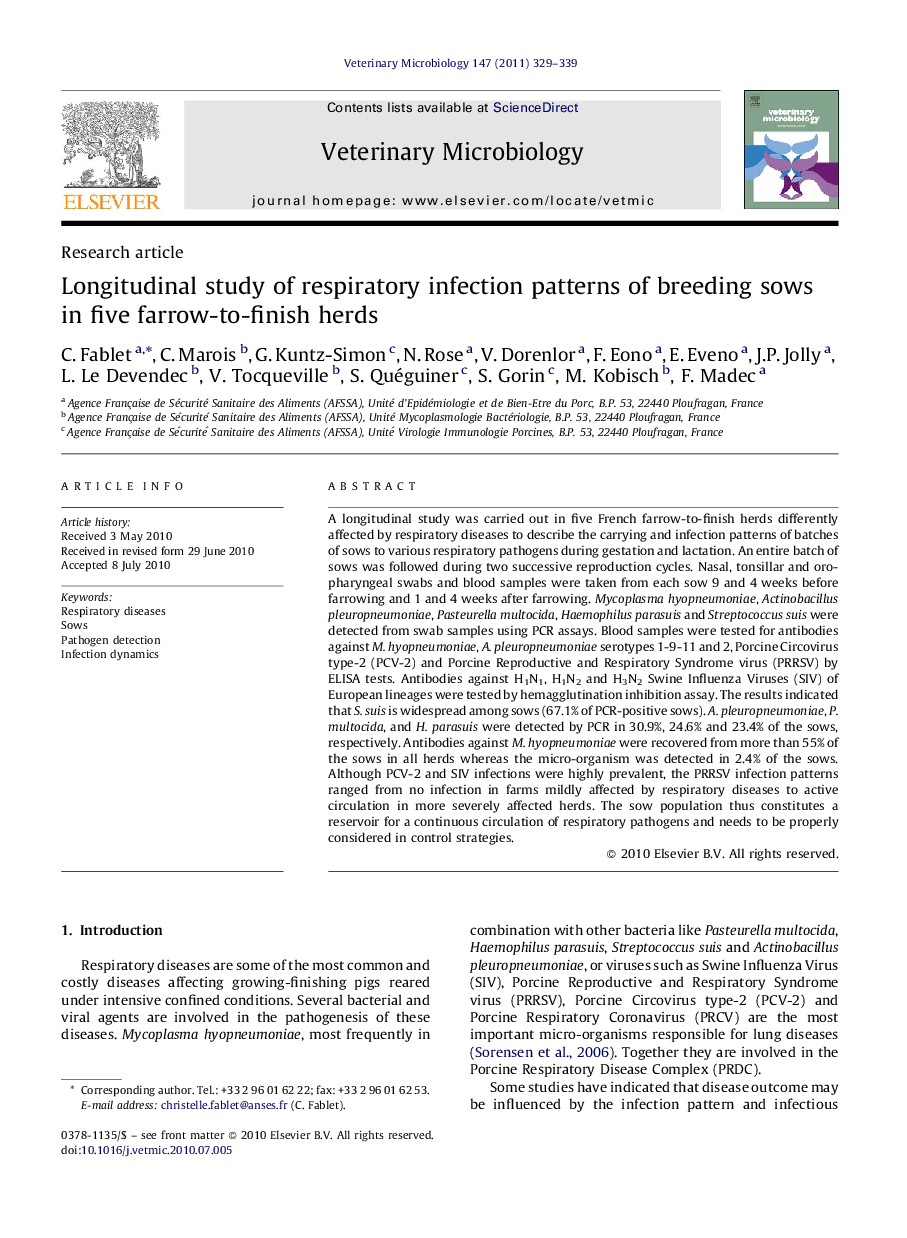| Article ID | Journal | Published Year | Pages | File Type |
|---|---|---|---|---|
| 2467781 | Veterinary Microbiology | 2011 | 11 Pages |
A longitudinal study was carried out in five French farrow-to-finish herds differently affected by respiratory diseases to describe the carrying and infection patterns of batches of sows to various respiratory pathogens during gestation and lactation. An entire batch of sows was followed during two successive reproduction cycles. Nasal, tonsillar and oro-pharyngeal swabs and blood samples were taken from each sow 9 and 4 weeks before farrowing and 1 and 4 weeks after farrowing. Mycoplasma hyopneumoniae, Actinobacillus pleuropneumoniae, Pasteurella multocida, Haemophilus parasuis and Streptococcus suis were detected from swab samples using PCR assays. Blood samples were tested for antibodies against M. hyopneumoniae, A. pleuropneumoniae serotypes 1-9-11 and 2, Porcine Circovirus type-2 (PCV-2) and Porcine Reproductive and Respiratory Syndrome virus (PRRSV) by ELISA tests. Antibodies against H1N1, H1N2 and H3N2 Swine Influenza Viruses (SIV) of European lineages were tested by hemagglutination inhibition assay. The results indicated that S. suis is widespread among sows (67.1% of PCR-positive sows). A. pleuropneumoniae, P. multocida, and H. parasuis were detected by PCR in 30.9%, 24.6% and 23.4% of the sows, respectively. Antibodies against M. hyopneumoniae were recovered from more than 55% of the sows in all herds whereas the micro-organism was detected in 2.4% of the sows. Although PCV-2 and SIV infections were highly prevalent, the PRRSV infection patterns ranged from no infection in farms mildly affected by respiratory diseases to active circulation in more severely affected herds. The sow population thus constitutes a reservoir for a continuous circulation of respiratory pathogens and needs to be properly considered in control strategies.
